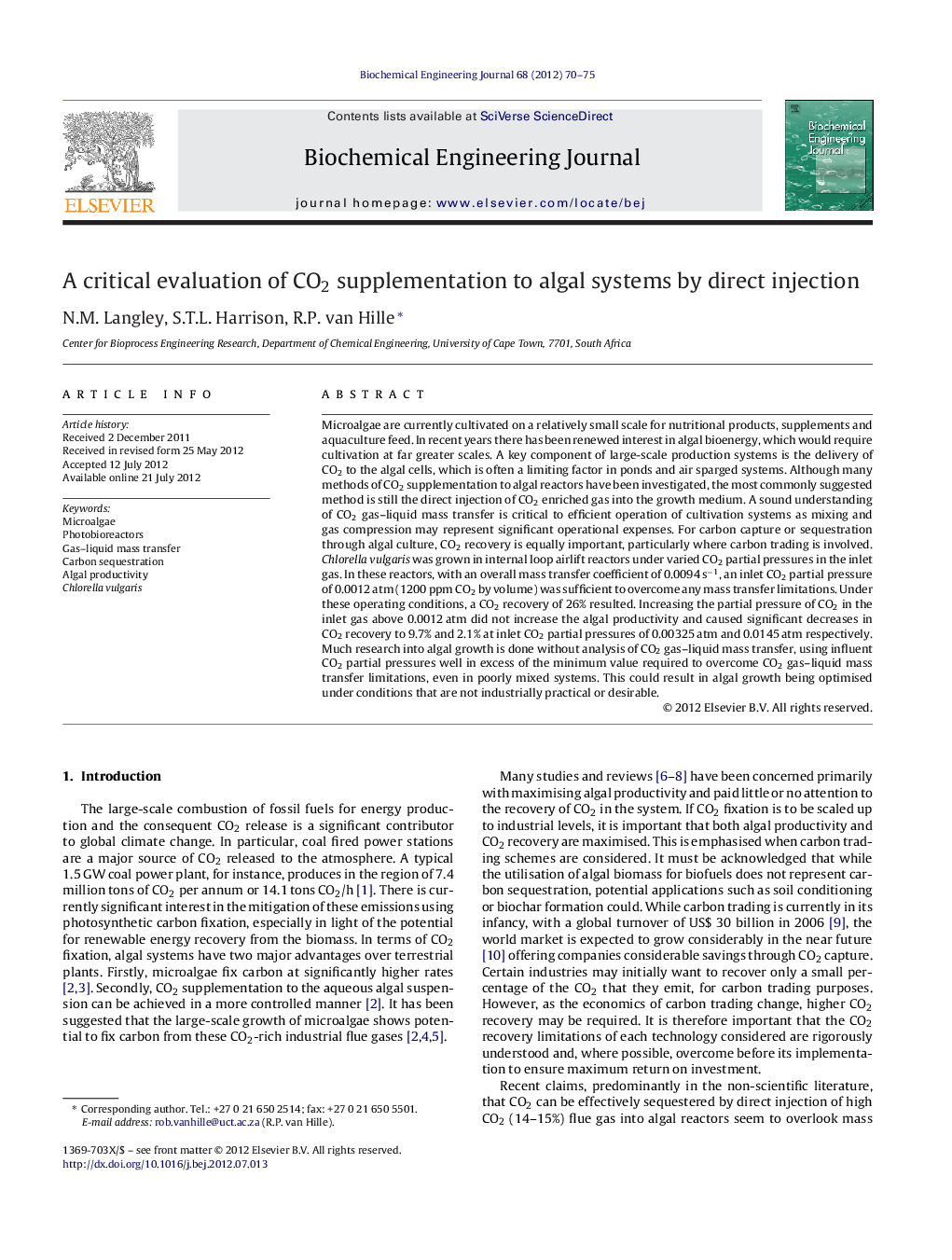| Article ID | Journal | Published Year | Pages | File Type |
|---|---|---|---|---|
| 3474 | Biochemical Engineering Journal | 2012 | 6 Pages |
Microalgae are currently cultivated on a relatively small scale for nutritional products, supplements and aquaculture feed. In recent years there has been renewed interest in algal bioenergy, which would require cultivation at far greater scales. A key component of large-scale production systems is the delivery of CO2 to the algal cells, which is often a limiting factor in ponds and air sparged systems. Although many methods of CO2 supplementation to algal reactors have been investigated, the most commonly suggested method is still the direct injection of CO2 enriched gas into the growth medium. A sound understanding of CO2 gas–liquid mass transfer is critical to efficient operation of cultivation systems as mixing and gas compression may represent significant operational expenses. For carbon capture or sequestration through algal culture, CO2 recovery is equally important, particularly where carbon trading is involved. Chlorella vulgaris was grown in internal loop airlift reactors under varied CO2 partial pressures in the inlet gas. In these reactors, with an overall mass transfer coefficient of 0.0094 s−1, an inlet CO2 partial pressure of 0.0012 atm (1200 ppm CO2 by volume) was sufficient to overcome any mass transfer limitations. Under these operating conditions, a CO2 recovery of 26% resulted. Increasing the partial pressure of CO2 in the inlet gas above 0.0012 atm did not increase the algal productivity and caused significant decreases in CO2 recovery to 9.7% and 2.1% at inlet CO2 partial pressures of 0.00325 atm and 0.0145 atm respectively. Much research into algal growth is done without analysis of CO2 gas–liquid mass transfer, using influent CO2 partial pressures well in excess of the minimum value required to overcome CO2 gas–liquid mass transfer limitations, even in poorly mixed systems. This could result in algal growth being optimised under conditions that are not industrially practical or desirable.
► Chlorella vulgaris was cultivated in 3.2 l internal loop airlift photobioreactors. ► Overall gas mass transfer coefficient calculated at 0.0094 s−1. ► PCO2PCO2 in excess of 0.0012 atm (1200 ppm) did not improve productivity further. ► CO2 sequestration efficiency at 0.0012 atm was 26%. ► Direct injection may not be effective for CO2 sequestration from flue gas.
